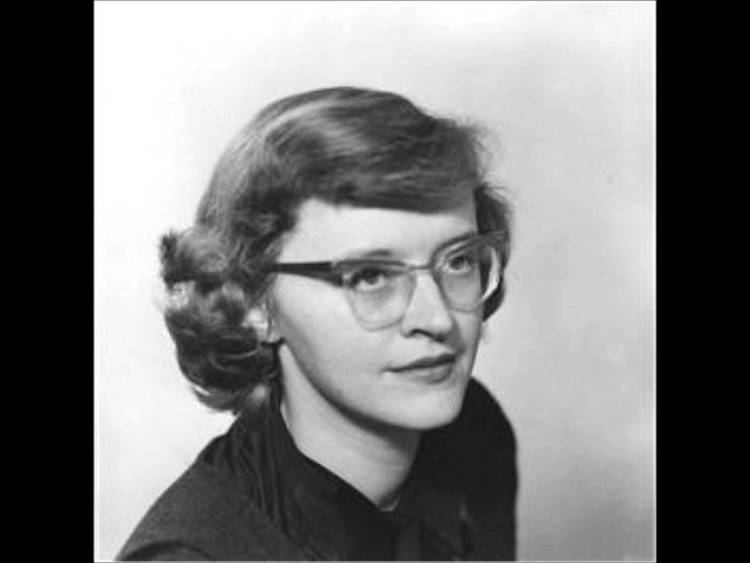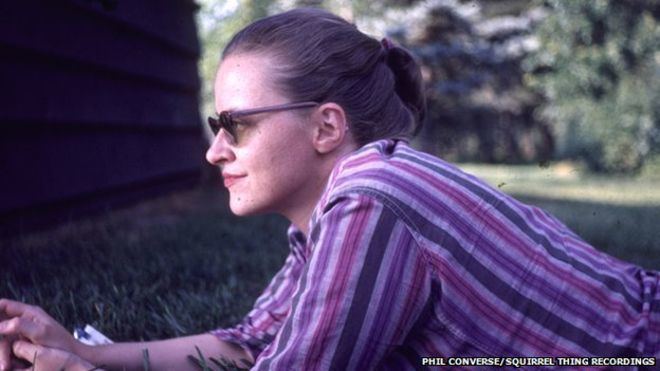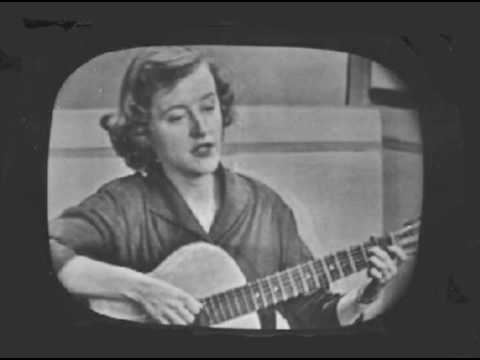Website Connie Converse | Name Connie Converse Albums How Sad, How Lovely Role Musician | |
 | ||
Birth name Elizabeth Eaton Converse Occupation(s) Singer-songwriter, Guitarist Composer Labels Squirrel Thing Recordings Similar People Nat Johnson, Howard Fishman, David Garland, Molly Drake, Sibylle Baier | ||
Instruments Vocals, Guitar, Piano Record label Squirrel Thing Recordings | ||
Connie converse father neptune
Elizabeth Eaton "Connie" Converse (born August 3, 1924) was an American musician active in New York City in the 1950s. Her work is among the earliest known recordings of the singer-songwriter genre of music.
Contents
- Connie converse father neptune
- Connie converse trouble
- Biography
- Legacy
- Discography
- Publications
- References

Converse left her family home in 1974 in search of a new life and was never heard from again. Her music was largely unknown until it was featured on a 2004 radio show, and released on the album How Sad, How Lovely in March 2009.

Connie converse trouble
Biography

Converse was born in Laconia, New Hampshire in 1924. She grew up in Concord as the middle child in a strict Baptist family. Her father was a minister and her mother was "musical", according to music historian David Garland. She attended Concord High School, where she was valedictorian and won eight academic awards including an academic scholarship to Mount Holyoke College in Massachusetts. After two years' study, she left Holyoke and moved to New York City. During the 1950s, she worked for the Academy Photo Offset printing house in New York's Flatiron District and lived in Greenwich Village. She started calling herself Connie, a nickname she had acquired in New York. She began writing songs and performing them for friends, accompanying herself on guitar.
Her music came to the notice of animator and amateur recording engineer and cartoonist Gene Deitch, who had made tape recordings of John Lee Hooker and Pete Seeger in the 1940s. Deitch made a number of tape recordings of Converse in the kitchen of his house in Hastings-on-Hudson in the mid-1950s. Unfortunately this did not attract record labels, and although she was very introverted, she was also popular with friends and other artists, including Susan Reed who covered her songs on stage. Her only known public performance was a brief television appearance in 1954 on The Morning Show on CBS with Walter Cronkite, which Deitch helped to arrange. She most likely played quite often at social dinner parties of friends and other small, informal gatherings.
In 1961, the same year that Bob Dylan moved to Greenwich Village and quickly met mainstream success, she left New York for Ann Arbor, Michigan, where her brother Philip Converse was a professor of political science at the University of Michigan. She worked in a secretarial job, and then as Managing Editor of the Journal of Conflict Resolution in 1963 which she also wrote for. She also continued playing music for friends at parties.
By 1973, Converse was burnt out and depressed. The Journal, which meant so much to her, left Michigan for Yale at the end of 1972, after being "auctioned off" without her knowledge. She was also told she needed a hysterectomy. Her colleagues and friends pooled their money to finance a six-months' trip to England for her. In August 1974, she wrote a series of letters to her family and friends, in which she mentioned her intention to make a new life somewhere else. She was expected to go on an annual family trip to a lake with family, but by the time the letters were delivered, she had packed her belongings in her Volkswagen Beetle and driven away, never to be heard from again. In one of the letters, she wrote "Let me go. Let me be if I can. Let me not be if I can’t. [...] Human society fascinates me & awes me & fills me with grief & joy; I just can't find my place to plug into it." It is entirely unknown what happened of her, but her younger brother hired a private investigator who told him that even if he found her, it was her right to disappear and he could not simply bring her back. He suspects she may have taken her own life, but again, it is unknown.
In January 2004, Gene Deitch – by then 80 years old and living in Prague since 1959 – was invited by New York music historian David Garland to appear on his WNYC radio show Spinning on Air. Deitch played some of the recordings he'd made, including one of Converse's song, "One by One". Two of Garland's listeners, Dan Dzula and David Herman, were inspired to track down any additional recordings of Converse. They found two sources for Converse's music: Deitch's collection in Prague, and a filing cabinet in Ann Arbor containing recordings Converse had sent to her brother, Philip, in the late 1950s. In March 2009, How Sad, How Lovely, containing 17 songs by Converse, was released by Lau derette Recordings. That same month, WNYC's Spinning on Air broadcast an hourlong special about the life and music of Converse. The show's host, David Garland, also explored the mystery surrounding Converse's disappearance with recordings from Converse's brother, Philip Converse, and readings of her letters by actor Amber Benson.
In 2015, How Sad, How Lovely was released as an 18 track vinyl by Squirrel Thing Recordings in partnership with the Captured Tracks label. The album has received favorable reviews, including by Los Angeles Times music critic Randall Roberts, who wrote "Few reissues of the past decade have struck me with more continued, joyous affection as “How Sad, How Lovely". The Australian singer-songwriter Robert Forster describes the album as "making a deep and marvelous connection between lyric and song that allows us to enter the world of an extraordinary woman living in mid-twentieth-century New York."
Legacy
Apart from her 1954 appearance on The Morning Show, hosted by Walter Cronkite, and a performance of her music in 1961 by folksinger Susan Reed at the Kaufmann Concert Hall in New York, Converse's music was not available to the public until it resurfaced in 2004. Since the 2009 release of her album, however, Converse's life and music have been the subject of news reports around the world. In addition to the mystery surrounding her disappearance, many of these articles focus on the content and style of Converse's music - and the possibility that she may be the earliest performer in the singer-songwriter genre. According to music historian David Garland, "Converse wrote and sang back in the 1950s, long before singer-songwriter was a recognized category or style. But everything we value in singer-songwriters today - personal perspective, insight, originality, empathy, intelligence, wry humor - was abundant in her music." Others cite the feminine experience often explored in her lyrics, as well as the themes of sexuality and individualism found in her songs as the reason Converse's music was ahead of its time. In October 2014, the experimental documentary film We Lived Alone: The Connie Converse Documentary premiered at the Sensoria Music & Film Festival in Sheffield, England. The film was created by Andrea Kannes as her thesis project for The New School's Media Studies Master's program in New York City.
Converse's life and music have served as the inspiration for numerous contemporary artistic works, including a play by Howard Fishman, who also produced the album "Connie's Piano Songs" featuring music written, but never recorded by Connie Converse. Other works inspired by Converse include the modern dance piece "Empty Pockets" by John Heginbotham, which was performed at the Miller Theater in 2015, British singer Nat Johnson's "Roving Woman" tribute performances, as well as tribute performances of Converse's music by Jean Rohe and Diane Cluck as part of the "Spinning on Air" 25th anniversary special.
